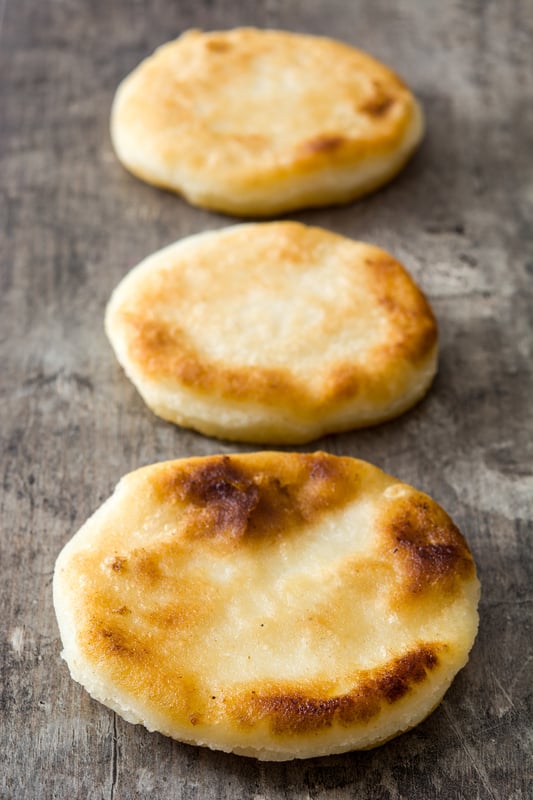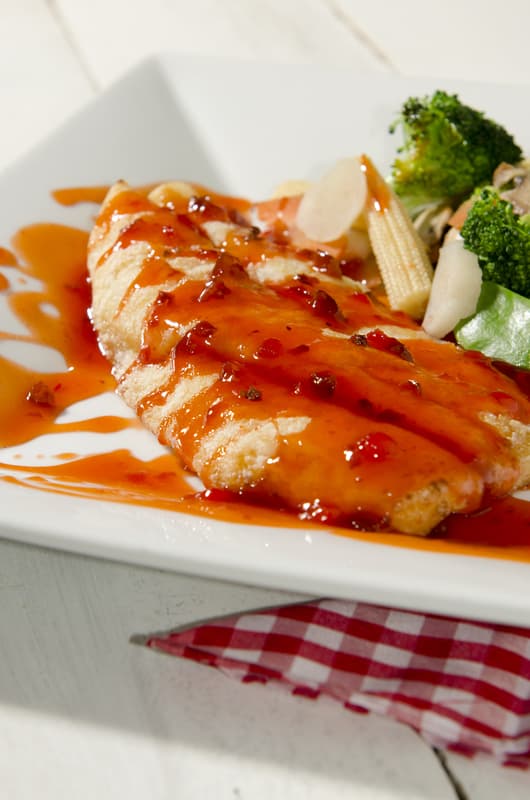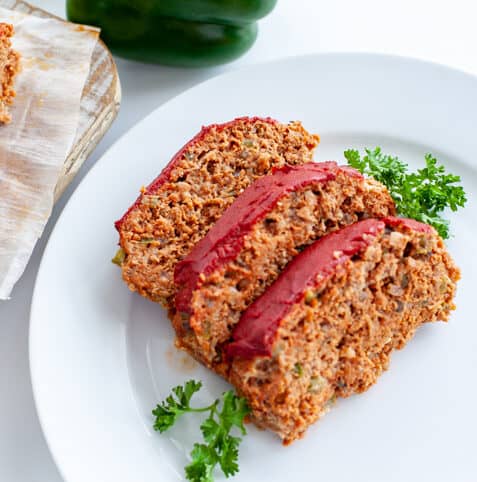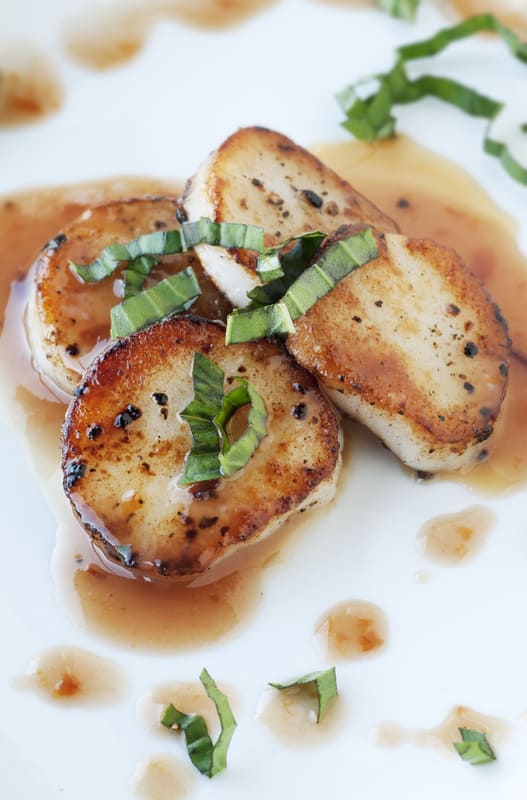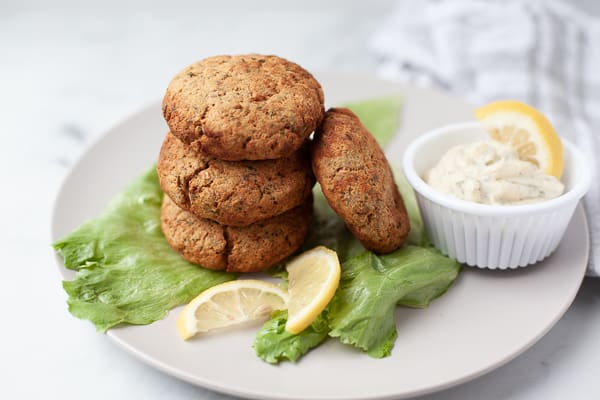Reverse Sear Pork Shoulder
Reverse searing is a foolproof cooking method that produces delicious, juicy, tender pork shoulder in the oven every time. Reverse Sear Pork Shoulder is an easy way to get perfectly cooked protein for your favorite side dishes!

Pork shoulder is a type of pork that comes from the area around the pig’s shoulder blade. It is a popular cut of pork for cooking because it is relatively tough and fatty, which makes it ideal for slow-cooking methods like braising or roasting. Pork shoulder can be cooked with the bone in or boneless and is often sold as a “butt” or “picnic shoulder” roast.
This cut of meat is generally served as part of the main dish, and is often used in recipes that call for shredded pork. Pork shoulder is also a popular choice for making pulled pork, as it contains a high amount of collagen, which breaks down during cooking and gives the meat a tender texture, and soaks up any sauce or seasonings well.
✅Reverse Searing Pork Shoulder
The reverse sear method is a simple cooking technique that involves finishing meat under the broiler or a torch after it has been cooked slowly at a lower temperature. This method produces tender, juicy pork shoulder that is not dry or overcooked. Reverse searing also allows for better caramelization of the exterior of the meat, resulting in a delicious crust when broiled in the oven.
🥩Ingredients and Tools
- Pork Shoulder – This cut of pork is relatively inexpensive and can be found at most grocery stores near the other cuts of pork. It usually comes wrapped in twine.
- Seasonings – You can use just about anything to season your meat. We love using a simple blend of kosher salt, garlic, and black pepper. Just mix in a small bowl with a spoon before dry rubbing onto the meat.
- Kitchen Twine – If your pork shoulder does not come wrapped in twine, its best to wrap it before cooking. See the instructions below.
- Cooking Oil – An oil such as, avocado oil, coconut oil or another high smoke point oil is best for broiling the pork after its been reverse seared.
- Oven Safe Cooking Rack – Use this on top of a rimmed baking sheet to ensure the heat gets circulated all around the surfaces of the meat.
- Meat Thermometer – A quality kitchen thermometer with a long probe is key to reverse searing any meat. For a top-of-the-line thermometer, use the Meater. For an inexpensive option, try the ThermPro.
📖How To Reverse Sear Pork Shoulder In The Oven
1️⃣Preheat the oven: Preheat oven to 250 degrees F. While the oven is preheating, let the pork tenderloin sit at room temperature for 25-30 minutes to take off the chill.
2️⃣Season the pork roast: Pat the meat dry with a paper towel. Season the pork tenderloin with your favorite seasonings.
3️⃣Wrap with twine: If your pork shoulder does not come pre-wrapped with butcher’s twine, do so now. This helps the roast retain its shape while cooking. (see instructions)
4️⃣Place the pork on a rack: Place the pork roast on a wire rack over a baking sheet and place in the oven.
5️⃣Cook until the internal temperature reaches 140 degrees F: Cook the pork in the oven until the internal temperature reaches 140 degrees Fahrenheit, about 30-40 minutes per pound. Use an oven-safe kitchen thermometer for accurate results.
6️⃣Remove from the oven and let rest for 5-10 minutes: Remove the pork from the oven and place foil over top for 15 minutes. Turn up the oven temperature to 500F or broil while the pork is resting.
7️⃣Broil the top: Brush the top with a light coating of cooking oil and broil for 5-8 minutes or until the exterior is golden brown and crispy.
8️⃣Remove from the heat and let rest for 10 minutes: Remove the pork from the heat and add foil back to the top. Let it rest for 10 minutes before slicing and serving.
🧶How To Wrap Pork Shoulder with Kitchen Twine (Trussing A Roast)
For a 5 pound roast, you’ll need about 3 feet of kitchen twine to wrap at least 3 pieces around with a knot depending on the length.
- Cut the twine: Start by measuring and cutting the twine into 3 even pieces.
- Place the pork shoulder in the center: Next, place the pork shoulder roast in the center of the cutting board.
- Wrap and tie each piece of twine: Take one end of each string and wrap it around the roast once, then tie it in a knot as tight as you can. You should now have 3 pieces of twine wrapped around the roast with a knot.
- Cut the ends: Cut off any excess twine from the ends.
👩🏼🍳Reverse Sear Cooking Tips
Always pat the meat dry: This will help the seasonings stick to the meat and prevent unwanted moisture.
Take the chill off: Letting the meat rest before cooking is important because it lets the proteins relax, keeping the meat from getting tough when going from hot to cold.
Use an oven-safe meat thermometer: This will allow you to accurately cook the meat to the correct temperature without opening the oven door and letting out heat. Use a temperature probe thermometer inserted into the thickest part of the meat.
Rest the meat after searing: Resting the meat allows the juices to redistribute, resulting in juicier and more flavorful pork.
Sear at high temperature: Whether you are pan searing in a cast iron pan, grilling, or smoking, ensure that the temperature is very hot before searing. Low temperatures will cause the meat to stay in longer, further increasing the internal temperature making it dry.
Reverse sear pork butt: The same cooking method can be used for pork butt.
🍋Pork Shoulder Seasoning Ideas
- Cajun seasoning: This blend of paprika, garlic powder, cayenne pepper, onion powder, and oregano is perfect for pork.
- Greek seasoning: A mix of garlic powder, onion powder, oregano, basil, and thyme gives the pork a Mediterranean flavor.
- Jamaican jerk: Allspice, ginger, cloves, thyme, and habanero peppers give this pork a spicy kick.
- BBQ rub: A blend of paprika, chili powder, garlic powder, onion powder, and cumin will give the pork a smoked flavor.
- Lemon herb: Perfect for summer, this blend of lemon zest, garlic, rosemary, thyme, and basil is refreshing and light.
- Chinese five spice: A mix of star anise, cloves, cinnamon, fennel, and Sichuan pepper gives the pork an exotic flavor.
- Chasu: A Japanese-inspired seasoning of ginger, garlic, and onion powder with a touch of cumin is perfect for reverse seared pork that’s great to use thinly sliced on top of ramen or other Japanese dishes.
❔FAQ
What is the difference between pork loin roast and pork shoulder?
Pork loin is a leaner cut of meat that is tender and juicy when cooked properly. Pork shoulder is a tougher cut of meat that benefits from slow-cooking methods such as braising or roasting.
Should I sear my pork shoulder before putting it in the oven?
No, you should not sear the pork before cooking it in the oven and searing the meat before cooking will create a barrier on the outside that will make the inside harder to cook properly when slow roasting in the oven.
🥘More Pork Recipes
- Sous Vide Pork Chops
- Air Fryer Pork Tenderloin
- Air Fryer Pork Meatballs
- Thick Cut Grilled Pork Chops
- Air Fryer Frozen Pork Chops
- Slow Cooker Mississippi Pork Roast
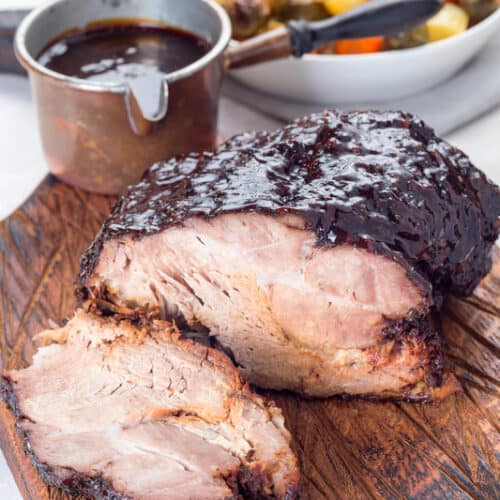
Reverse Sear Pork Shoulder
Equipment
- Oven Safe Cooking Rack
- Meat Thermometer
Ingredients
- 5 pounds Pork Shoulder
- 2 tsp Salt
- 1 ½ tsp Paprika
- 1 tsp Garlic Powder
- ½ tsp Black Pepper
Instructions
- Preheat oven to 250 degrees F. While the oven is preheating, let the pork shoulder sit at room temperature for 25-30 minutes to take off the chill.
- Pat the meat dry with a paper towel. Season the pork shoulder with your favorite seasonings.
- Place the pork shoulder on a wire rack over a baking sheet and place in the oven.
- Cook the pork in the oven until the internal temperature reaches 140 degrees Fahrenheit, about 30-40 minutes per pound. Use an oven-safe kitchen thermometer for accurate results.
- Remove the pork from the oven and place foil over top for 15 minutes. Turn up the oven temperature to 500F or broil while the pork is resting. OPTIONAL: Brust with a light coating of oil before broiling.
- Remove the pork from the heat and add foil back to the top. Let it rest for 10 minutes before slicing and serving.
